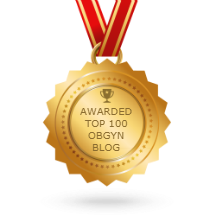Tis the season to start firming up your holiday gift plans. To do this, remember that gift giving is supposed to be fun. It shouldn’t stress you out, or be unduly expensive. It should be personal. Finally, we all know the best gifts are home made.
Here’s a list of ideas that should get you cooking on some fun food projects that will make great gifts. For more ideas, think of what you are really good at preparing. And, if you are still at a loss, then just consider what you might like to get !
Holiday food gifts divide themselves nicely into several categories:
1. Baked goods, from cookies and cakes to fancy breads. You can even leave your cookie dough uncooked in a roll of waxed paper, and package them nicely for refrigeration. This is the so called “ refrigerator cookie “ which you can slice off as needed and “ bake” in the toaster oven.
2. “Kits" for baked goods, cleverly packaged in, for example, a mason jar. Decorative recipe cards are included.
3. Homemade candy, since it is a project to make. Brittles and toffees are classic, but truffles are highly prized.
4. Candied or spiced nuts, since they are festive and because they are handy for entertaining.
5. Other mason jar “ kits”, for soup, spiced hot drinks like chocolate, coffee, or chai.
6. Spice mixes in nice containers.
7. Preserved goods such as jam, jelly, and pickles. Of course if you live in the northern hemisphere it is not summer at Christmastime. Thus you will not have fresh fruit and vegetables to preserve. But you can still make preserves from other things, like wine ! You can make jelly from wine and even from balsamic vinegar. Plus, it only takes a few hot peppers to make some colorful hot pepper jelly.
8. You can make infused oils and vinegars and use pretty bottles.
9. Food kits can become more elaborate if you include equipment and table dressings. Consider a sushi themed basket with rice, seaweed, sushi rollers, pickled ginger, horseradish, chopsticks and dipping bowls.
10. If you are super short on time, you can present someone a “ coupon “ for a dinner catered by you, or even just a batch of brownies.
Food gifts are really fun to receive. This is especially true is you package them artfully and with care. Craft, fabric and even grocery stores have great materials for wrapping. I am partial to unbleached parchment paper and plain brown cooking twine. You can add natural embellishments like pine cones, or evergreen twigs. You could even tie in a small wooden spoon.
Whatever kind of gift you chose to give, just make sure that there is a little of you in it.




























